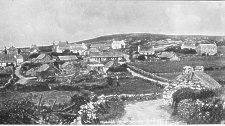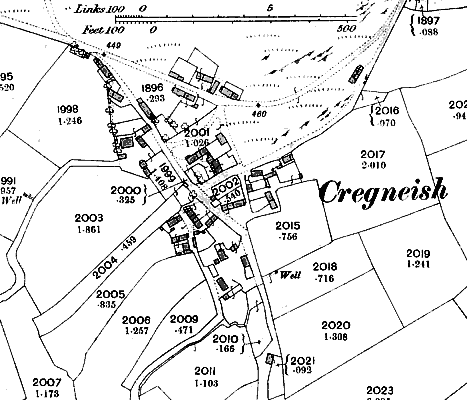
view of Village c.1901
An isolated village on the Mull Hills above Spanish Head - its isolation allowed it to keep the Manx language alive until well into the 20th century (the message on the postcard said 'last place the manx language was spoken').
In the 1930's the Manx National Heritage, drawing on an example from the Republic of Ireland, decided to acquire property in the village with the intention of opening an open-air folk museum.
Lord Teignmouth visited it in 1829 and was obviously impressed:
... the little village of Craignish, forms a remarkable exception. Expecting to find, in the dreary sequestered height on which it is situated, forming part of the ridge terminating in Spanish Head, a collection of hovels, I was agreeably disappointed to discern cottages built of stone, a material which is fortunately at hand in this corner of the Island, neatly thatched, and white-washed, and equally clean within, as most of them were provided with chimnies which carried off the smoke.
though George Head visiting a mere three years later was less complementary:
... stands a small hamlet, in a spot so retired, and composed of edifices so rude, that it is really hard to predicate of the houses at a little distance, whether they are masses of rock or human dwellings

The plan is taken from the 1868 O/S - the Mull Hills are the upland area to the north of the village - at this period the Chapel of Ease of St Peter's was not built. The 1900 photograph is taken from near the bend in the road to the south of the village close to the field numbered 2021..
TBC...
|
|
||
|
Any comments, errors or omissions
gratefully received The
Editor |
||